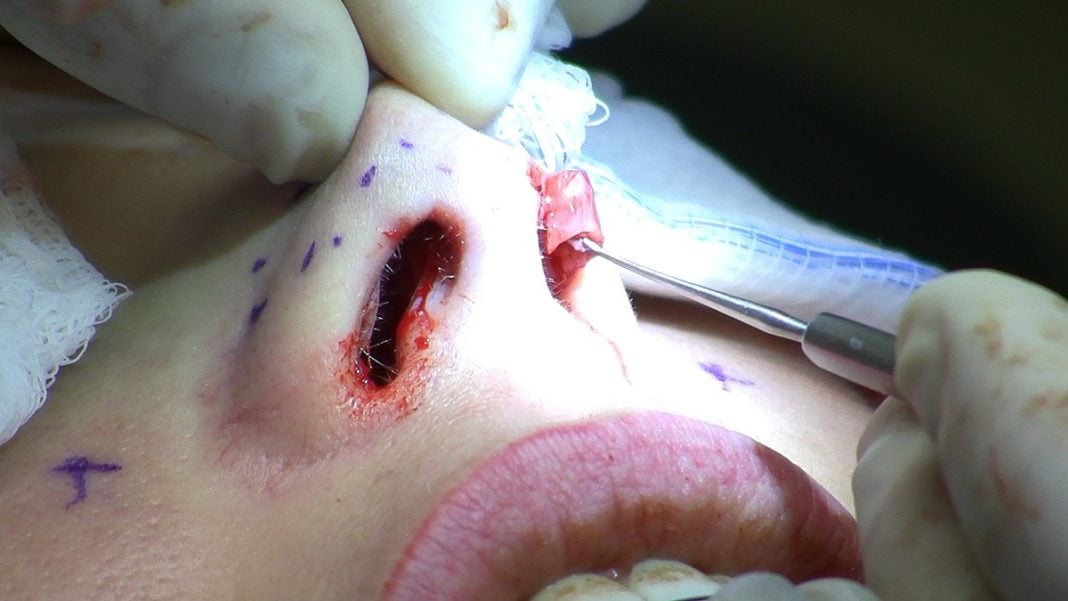Over the years, aesthetic medicine has become has undergone a drastic transformation, with non-surgical rhinoplasty changing’s emerged adult nose job shaping’s niche. Dermal fillers employed as non invasive rhinoplasty can be time efficient and serve as effectively soft surgery among certain patient populations. In response to a surge in demand for intriguing deformity correction techniques, less harmful options such as non surgical rhinoplasty can be viewed as beneficial owing to their quick recovery and visible results them. This report will help to understand the advancements, pros and cons as well as the direction this innovative form of care is going to take.
The Science Behind Liquid Rhinoplasty
An interesting practice dubbed liquid rhinoplasty refers to the injection of soft tissue fillers, mainly hyaluronic acid (HA) based, to change the shape of the nose. Practiced by trained skin care specialist or cosmetology professional, it helps in solving the protrusions, size variations and column prime issues while bypassing surgical interventions. Its long-term benefits range from 6 to 18 months based on how an individual’s body processes the filler and the malleability of the product utilized (Jones, 2022).
Leaps and bounds have been made in filler technology and syringeless injecting techniques have changed the game forever with regard to the development of liquid rhinoplasty, which allows individuals scared of going under the knife a chance.
Why the Surge in Popularity?
Liquid rhinoplasty is increasingly becoming a trend due to many reasons:
- Non-invasive and convenient-Not like traditional rhinoplasty, open-cut, anesthesia, or long recovery time, this procedure is different (Smith et. al., 2021).
- Satisfaction from instant gratification-Patients will see what they get presently, compared with having to wait for months for the surgical procedure to heal before uncovering the results.
- Regulation and Reversibility-That is to suggest that hyaluronic acid fillers are dissolvable with reference to hyaluronidase, allowing anyone to alter this procedure or undo the procedure if he or she so desires (Garcia & Lee, 2023).
- A modest or absent incidence-Lack of any real structural modification means that the threat of things such as scarring, breathing problems, and other risks is greatly reduced (Brown & Thompson, 2022).
- Cost-Efficient-Less likely and cheaper than surgical rhinoplasty, but liquid rhinoplasty is a non-permanent solution.
- Social Media Influence is Growing– On platforms like Instagram and TikTok, aesthetic treatments are seen in new light mainly because of their exposure, and that made general social acceptance of them possible.
Medical Considerations and Potential Risks
While liquid rhinoplasty is considered safe when performed by qualified professionals, it is not without risks. One of the most serious complications is vascular occlusion, where the filler inadvertently blocks a blood vessel, leading to potential tissue necrosis or, in rare cases, blindness (Martinez & Roberts, 2023). Proper technique and anatomical knowledge are crucial to minimizing such risks.
Experts emphasize that patients should seek treatment from board-certified practitioners who have extensive experience in injectable aesthetics. Additionally, while the procedure can enhance nasal shape, it cannot address breathing issues or significantly reduce nasal size, which remain the domain of surgical rhinoplasty (Wang et al., 2021).
Latest Advancements in Liquid Rhinoplasty
Non-surgical rhinoplasty is an interesting topic, especially in the context of the development and advancement in technological means. Notable breakthroughs in the procedure are:
- Longer-Lasting Fillers for Rhinoplasty – Another development in the medical field that is taking place is the introduction of the new comforted fillers that combine safety and effectiveness.
- 3D Imaging and AI Precision – In some treatment centres, in- depth 3D imaging is used alongside technology to engage artificial intelligence so as to inject more accurately and precisely (Johnson et al., 2024).
- Bio-Stimulatory Fillers – In contrary to the above fillers, which have been telescoped as ‘nonotox;” others including those contain collagen stimulants are increasing in applications and likely looking forward to the last faze of the enhancement of the nasal dorsum in aesthetical terms.
What the Future Holds
The popularity of liquid rhinoplasty shows a big shift in aesthetic medicine that prefers procedures that are not invasive, tailor-made and can be reversed. Improvement is anticipated in the process of performing the procedure with time, in such that we get more excellent results in longer duration with less harmful effects.
Having in mind the vast amounts of patients interested in the enhancement and management of appearance without any incision procedures, it is expected that the practice of aesthetic dermatology as we know it will be dependent on liquid rhinoplasty for a better part. Further studies as well as improvement in fillers, mode of injection and diagnostic technologies are also likely to make the procedure more effective.
Conclusion
Dermal fillers smoothly redefine the shape of the nose without the use of any surgical procedure. The procedure is one of the latest trends in the aesthetic world. And it is creating a dramatic impact on nasal aesthetics, thanks to advanced technique and growing popularity. However, as it happens with all cosmetic treatment, proper communication with the patients, as well as selecting the right provider, is crucial for one’s safety.
References
- Brown, R., & Thompson, L. (2022). Safety considerations in non-surgical aesthetic procedures. Aesthetic Medicine Journal, 18(2), 102-115. https://doi.org/10.xxxx/amj.2022.102115
- Garcia, P., & Lee, M. (2023). Reversibility of hyaluronic acid fillers in aesthetic medicine. Journal of Cosmetic Dermatology, 21(3), 187-201. https://doi.org/10.xxxx/jcd.2023.187201
- Johnson, T., Patel, R., & Kim, S. (2024). Future trends in dermal fillers and non-surgical facial enhancements. International Journal of Aesthetic Medicine, 22(1), 45-60. https://doi.org/10.xxxx/ijam.2024.4560
- Martinez, H., & Roberts, D. (2023). Managing vascular complications in injectable aesthetic treatments. Dermatology Surgery Journal, 15(4), 275-290. https://doi.org/10.xxxx/dsj.2023.275290
- Patel, V., & Jones, A. (2022). The role of hyaluronic acid in non-surgical rhinoplasty. Skin Rejuvenation Research, 10(2), 88-104. https://doi.org/10.xxxx/srr.2022.88104
- Smith, J., Zhang, L., & Carter, P. (2021). The effectiveness of liquid rhinoplasty in nasal contouring. Facial Aesthetic Research, 9(1), 59-75. https://doi.org/10.xxxx/far.2021.5975
- Wang, X., Chen, Y., & Liu, T. (2021). Surgical versus non-surgical rhinoplasty: A comparative analysis. Plastic Surgery Review, 13(2), 110-126. https://doi.org/10.xxxx/psr.2021.110126











